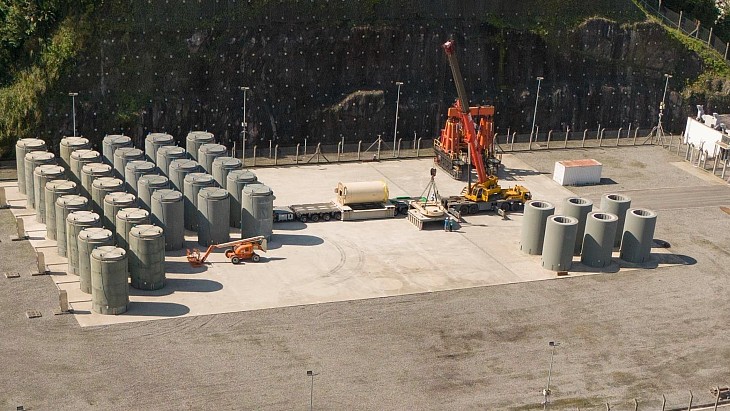A team led by Battelle Memorial Institute has been selected by the US Department of Energy (DOE) to drill a 16,000 feet (4880 metre) test borehole into a crystalline basement rock formation in North Dakota as part of studies into the feasibility of using boreholes for nuclear waste disposal.
The team, which also includes the University of Dakota Energy and Environmental Research Center, Schlumberger of Houston, Texas, and Swiss company Solexperts, will drill the borehole at a location in Rugby, North Dakota. The field test will provide insights into subsurface science, and engineering challenges such as drilling techniques, wellbore stability and sealing, and subsurface characterization. Similar large, geologically stable rock formations have been identified in many regions across the USA, and the DOE said that the work in North Dakota will help to increase understanding of similar locations across the country.
US Energy Secretary Ernest Moniz said that the project was an "important first step to increasing our scientific understanding of the potential uses for crystalline rock formations including the feasibility of boreholes as an option for long-term nuclear waste disposal."
Deep borehole disposal of high-level radioactive waste has been considered as an option for geological isolation for many years, and was first evaluated by the US National Academy of Sciences in 1957. The concept consists of drilling a borehole into crystalline basement rock to a depth of about 5000 metres, emplacing waste canisters containing used nuclear fuel or vitrified radioactive waste from reprocessing in the lower 2000 metres of the borehole, and sealing the upper 3000 metres of the borehole with materials such as bentonite, asphalt or concrete. The contents would not be retrievable.
The USA's Blue Ribbon Commission on America's Nuclear Future recommended in January 2012 that further research should be carried out into the possibility of using deep boreholes for the disposal of "certain forms of waste that have essentially no potential for re-use". The DOE's five-year, $35 million project to determine the feasibility of deep borehole disposal will include studies of the hydrogeological, geochemical and geomechanical properties of the host rock at "considerable depth".
Deep borehole concepts have been developed (but not implemented) in several countries, including Denmark, Sweden, Switzerland and USA for high level radioactive waste (HLW) and used nuclear fuel. Compared with deep geological disposal in a mined underground repository - typically at depths between 250 and 1000 metres - placement in deep boreholes is considered to be a more expensive option for large volumes of waste but may be an attractive proposition for the disposal of smaller waste forms.
A report published by the DOE in 2014 suggested that the USA, which had planned to dispose of all HLW and used nuclear fuel in one or more shared geologic repositories, should consider disposing of defence-related materials separately from those generated by the commercial nuclear industry. The report, Assessment of Disposal Options for DOE-Managed High-Level Radioactive Waste and Spent Nuclear Fuel, recommended that the DOE "retain the flexibility" to consider disposal of smaller DOE-managed waste forms in deep boreholes rather than in a mined repository.
Researched and written
by World Nuclear News




_58913.jpg)
_35510.jpg)
_93097.jpg)





